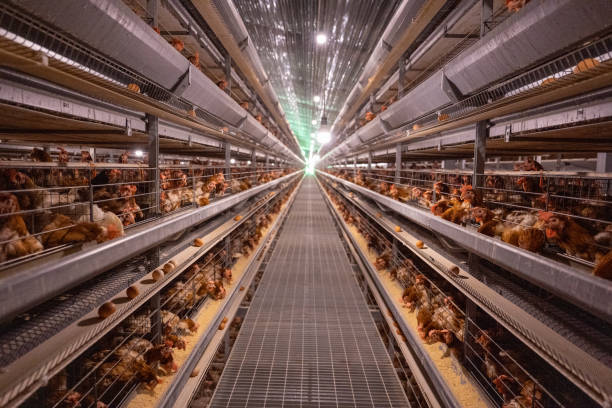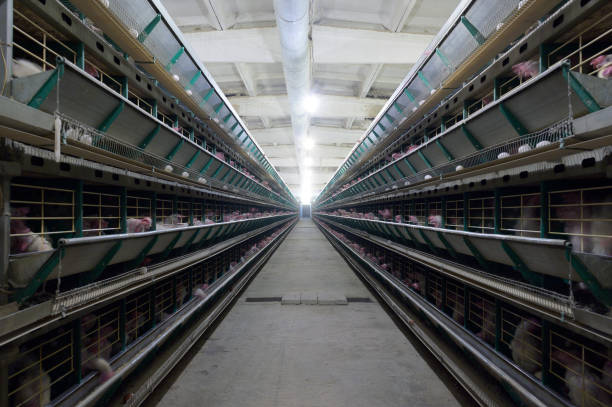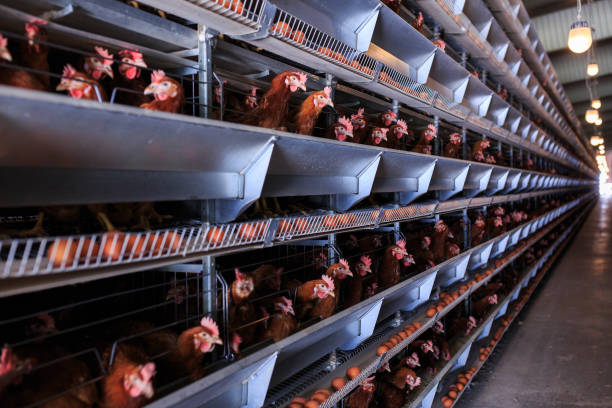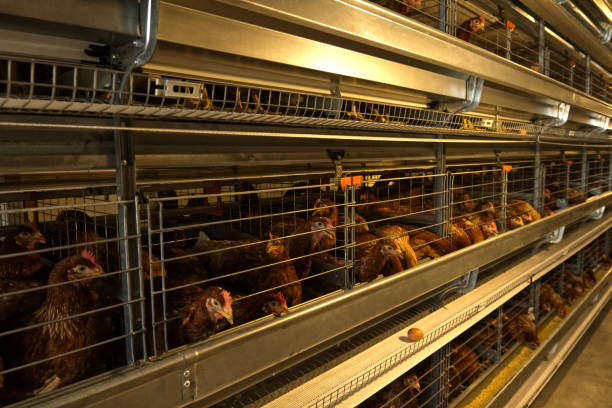
Kenya Poultry Farming: Choosing the Right Environmental Control Equipment
Kenya Poultry Farming: Choosing the Right Environmental Control Equipment
Poultry farming in Kenya has experienced significant growth in recent years, evolving from small-scale, backyard operations to more intensive, commercially-oriented setups. This evolution has brought with it a greater need for improved environmental control within poultry houses. Maintaining optimal environmental conditions is crucial for maximizing the health, welfare, and productivity of chickens. Choosing the right environmental control equipment is, therefore, a critical decision for Kenyan poultry farmers. This article delves into the various factors involved in selecting the appropriate equipment for different poultry farming setups in Kenya.
**Understanding the Importance of Environmental Control**
Before diving into specific equipment options, it’s essential to understand why environmental control is so vital. Chickens are highly sensitive to their environment, and factors like temperature, humidity, ventilation, and lighting significantly affect their well-being and performance. Inadequate environmental control can lead to a range of problems, including:
* **Reduced Growth Rate:** Extreme temperatures, especially heat stress, can suppress appetite and reduce growth rates in broilers.
* **Lower Egg Production:** Laying hens are particularly susceptible to temperature fluctuations. High temperatures can decrease egg production, egg size, and shell quality.
* **Increased Disease Susceptibility:** Poor ventilation and high humidity create an environment conducive to the growth of bacteria and other pathogens, increasing the risk of disease outbreaks.
* **Higher Mortality Rates:** In severe cases, inadequate environmental control can lead to increased mortality rates, especially in young chicks or during periods of extreme weather.
* **Behavioral Issues:** Overcrowding, poor lighting, and inadequate ventilation can all contribute to behavioral problems such as feather pecking and cannibalism.
**Key Environmental Factors to Control**
Successfully managing the poultry environment requires addressing several key factors:
* **Temperature:** Maintaining a consistent and optimal temperature is crucial for poultry health and performance. Young chicks require higher temperatures than mature birds.
* **Humidity:** High humidity can exacerbate the effects of high temperatures, while low humidity can lead to respiratory problems.
* **Ventilation:** Adequate ventilation is essential for removing excess heat, moisture, and ammonia from the poultry house, and for providing fresh air.
* **Lighting:** Lighting plays a vital role in regulating the chickens’ biological rhythms and influencing their behavior, growth, and egg production.
**Types of Environmental Control Equipment**
Now, let’s explore the different types of equipment available to help Kenyan poultry farmers manage these environmental factors:
**1. Ventilation Systems**
Ventilation is arguably the most critical aspect of environmental control. It provides fresh air, removes harmful gases like ammonia, controls humidity, and helps regulate temperature. There are several types of ventilation systems commonly used in poultry houses:
* **Natural Ventilation:** This relies on natural airflow through openings in the poultry house. It is the simplest and least expensive option but provides limited control, especially during extreme weather. Natural ventilation is typically used in smaller, less intensive poultry operations. Considerations for natural ventilation:
* **House Orientation:** Orient the house to take advantage of prevailing winds.
* **Opening Size and Placement:** Ensure adequate opening sizes and proper placement to promote airflow.
* **Windbreaks:** Consider windbreaks to prevent excessive drafts.
* **Mechanical Ventilation:** This uses fans to force air into or out of the poultry house, providing more precise control over ventilation rates. There are two main types of mechanical ventilation:
* **Exhaust Ventilation:** Fans are used to exhaust air from the house, creating negative pressure that draws fresh air in through inlets.
* **Positive Pressure Ventilation:** Fans are used to blow fresh air into the house, creating positive pressure that forces stale air out through outlets.
* **Tunnel Ventilation:** A variation of exhaust ventilation, this system uses large fans at one end of the house to create a tunnel of air flowing along the length of the building. Tunnel ventilation is particularly effective in hot climates for cooling birds.

* **Cross Ventilation:** Fans are placed on one side of the house to draw air across the building and out through openings on the opposite side.
**Considerations when choosing a ventilation system:**
* **House Size and Design:** Larger houses require more powerful ventilation systems.
* **Climate:** Hot, humid climates require more effective ventilation than cooler, drier climates.
* **Bird Density:** Higher bird densities require higher ventilation rates.
* **Energy Costs:** Mechanical ventilation systems can be energy-intensive, so it’s important to choose energy-efficient fans and to optimize ventilation strategies.
**2. Cooling Systems**
In hot climates like Kenya, cooling systems are essential for preventing heat stress in poultry. Several cooling options are available:
* **Evaporative Cooling:** This involves using water to cool the air through evaporation. Common evaporative cooling methods include:

* **Pad and Fan Systems:** Air is drawn through wet pads, cooling it as water evaporates. This is a highly effective cooling method, but it requires a reliable water supply.
* **Fogging Systems:** Fine droplets of water are sprayed into the air, cooling it as they evaporate. Fogging systems are less effective than pad and fan systems but are less expensive and easier to install.
* **Sprinkler Systems:** Water is sprayed directly onto the birds, providing direct cooling. This method is effective but can increase humidity levels in the poultry house.
* **Roof Insulation:** Insulating the roof of the poultry house can reduce heat gain from solar radiation.
* **Shade:** Providing shade outside the poultry house can also help to reduce heat stress. Shade can be provided by trees, shade cloths, or specially designed shade structures.
**Considerations when choosing a cooling system:**
* **Climate:** The effectiveness of different cooling systems depends on the climate. Evaporative cooling is more effective in dry climates than in humid climates.
* **Water Availability:** Evaporative cooling systems require a reliable water supply.
* **Cost:** Pad and fan systems are more expensive than fogging systems or sprinkler systems.
**3. Heating Systems**
While Kenya is generally a warm country, heating may be necessary during cooler months or for brooding chicks. Common heating methods include:
* **Brooders:** These provide localized heat for young chicks. Brooders can be electric, gas-fired, or infrared.
* **Space Heaters:** These heat the entire poultry house. Space heaters can be electric, gas-fired, or propane-fired.
* **Radiant Heaters:** These emit infrared radiation that heats the birds directly. Radiant heaters are energy-efficient and provide uniform heating.
**Considerations when choosing a heating system:**
* **House Size:** Larger houses require more powerful heating systems.
* **Climate:** Colder climates require more heating than warmer climates.
* **Fuel Availability:** Choose a heating system that uses a readily available and affordable fuel source.
* **Safety:** Ensure that the heating system is properly installed and maintained to prevent fires and carbon monoxide poisoning.
**4. Lighting Systems**
Lighting is an important factor in poultry production, influencing growth, egg production, and behavior.
* **Incandescent Bulbs:** These are the traditional lighting option, but they are energy-inefficient and have a short lifespan.
* **Fluorescent Lights:** These are more energy-efficient than incandescent bulbs and have a longer lifespan.

* **LED Lights:** These are the most energy-efficient lighting option and have a very long lifespan. LED lights also allow for precise control over light intensity and color.
**Considerations when choosing a lighting system:**
* **Light Intensity:** The appropriate light intensity depends on the type of poultry and the stage of production.
* **Light Duration:** The duration of light exposure affects egg production in laying hens.
* **Light Color:** Some studies suggest that certain light colors can improve poultry performance.
* **Energy Efficiency:** Choose an energy-efficient lighting system to reduce energy costs.
**5. Control Systems**
Sophisticated control systems can automate environmental control, optimizing conditions and reducing labor costs. These systems can monitor temperature, humidity, ventilation rates, and lighting levels, and automatically adjust equipment to maintain optimal conditions.
**Considerations when choosing a control system:**
* **Complexity:** Choose a system that is appropriate for the size and complexity of your poultry operation.
* **Ease of Use:** The system should be easy to operate and understand.
* **Reliability:** Choose a system that is reliable and backed by a good warranty.
* **Cost:** Control systems can be expensive, so it’s important to weigh the cost against the potential benefits.
**Factors to Consider When Making Your Decision**
Choosing the right environmental control equipment involves considering several factors specific to your poultry farming operation:
* **Type of Poultry:** Broiler chickens, laying hens, and other types of poultry have different environmental requirements.
* **Scale of Operation:** Larger operations typically require more sophisticated equipment.
* **Budget:** Environmental control equipment can be a significant investment, so it’s important to set a budget and stick to it.
* **Climate:** The climate in your region will influence the type of equipment you need. As a warm country, effective cooling systems should be prioritized.
* **Availability of Resources:** Consider the availability of water, electricity, and fuel in your area.
* **Maintenance and Support:** Choose equipment that is easy to maintain and that is supported by a reliable service network.
**Specific Recommendations for Kenyan Poultry Farmers**
Given the climate and common farming practices in Kenya, here are some specific recommendations:
* **Prioritize Ventilation:** Invest in a good ventilation system to remove excess heat and humidity, especially during the hot season. A combination of natural and mechanical ventilation may be the most cost-effective solution for many farmers.
* **Implement Cooling Strategies:** Consider using a combination of evaporative cooling methods, such as fogging systems or pad and fan systems, along with roof insulation and shade.
* **Use Energy-Efficient Lighting:** Switch to LED lighting to reduce energy costs and improve lighting quality.
* **Monitor Environmental Conditions:** Use thermometers, hygrometers, and other monitoring devices to track environmental conditions in the poultry house.
* **Seek Expert Advice:** Consult with poultry equipment suppliers and agricultural extension officers to get expert advice on choosing the right equipment for your specific needs.
**Conclusion**
Choosing the right environmental control equipment is a critical investment for Kenyan poultry farmers. By understanding the importance of environmental control, the different types of equipment available, and the factors to consider when making your decision, you can create a healthy, comfortable, and productive environment for your chickens, maximizing your profitability and ensuring the long-term success of your poultry farming operation. Remember to prioritize ventilation and cooling strategies, use energy-efficient lighting, and monitor environmental conditions closely. With the right equipment and management practices, you can overcome the challenges of poultry farming in Kenya and achieve your goals.
